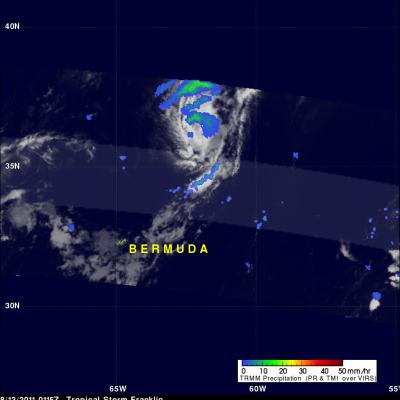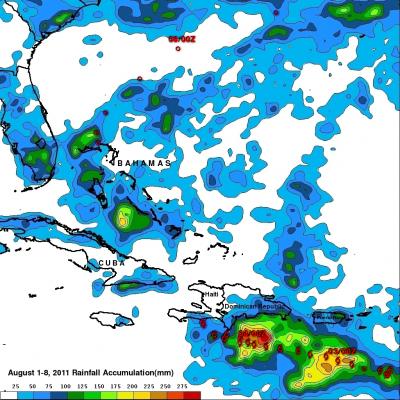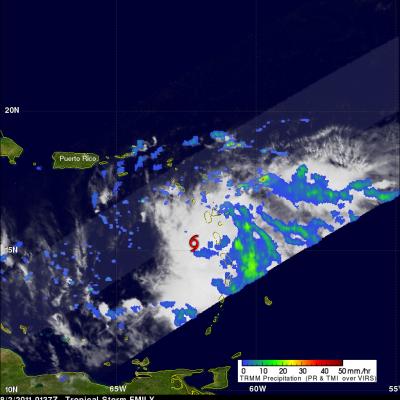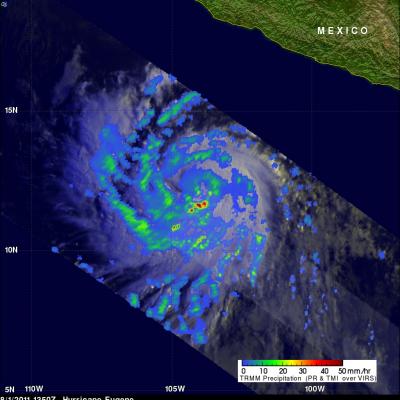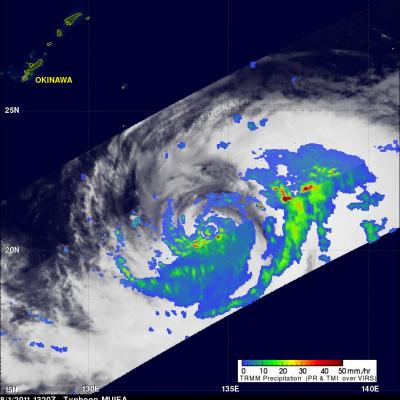Short-Lived Tropical Storm Franklin
Tropical Storm Franklin was only active for a short time but the TRMM satellite had a fairly good view when it passed above on Saturday August 13 at 0115 UTC. TRMM's Microwave Imager (TMI data shows that Franklin was dropping some light to moderate rainfall north-northeast of Bermuda. Franklin became extra-tropical a little later as it moved into the open waters of the north Atlantic.


